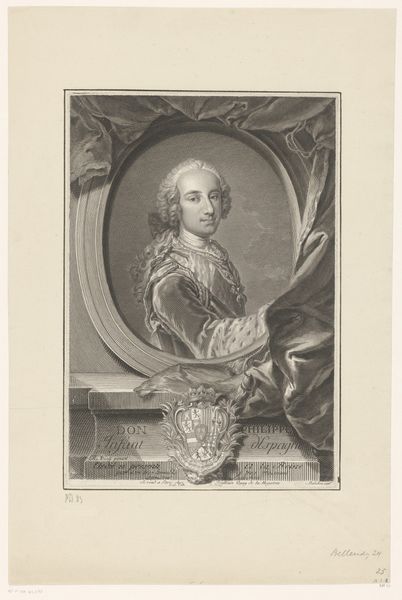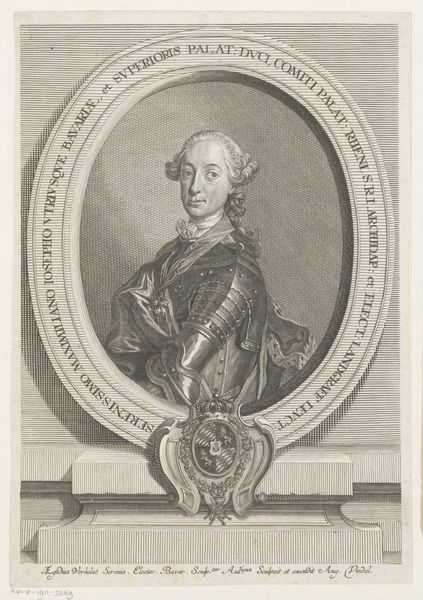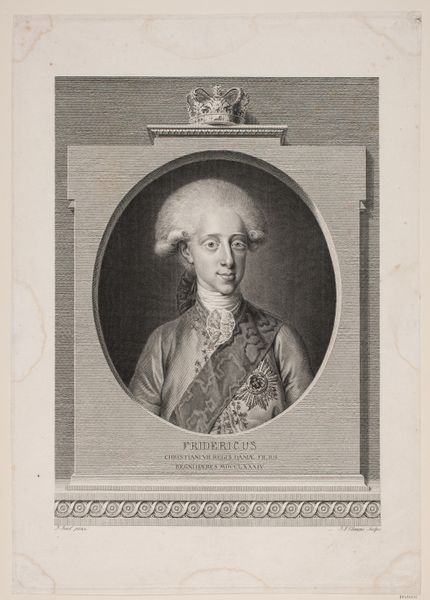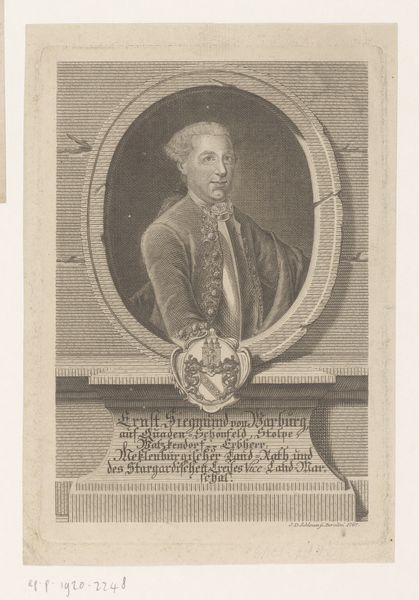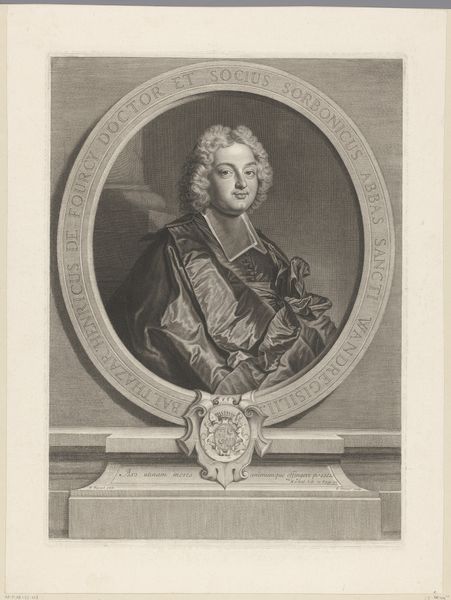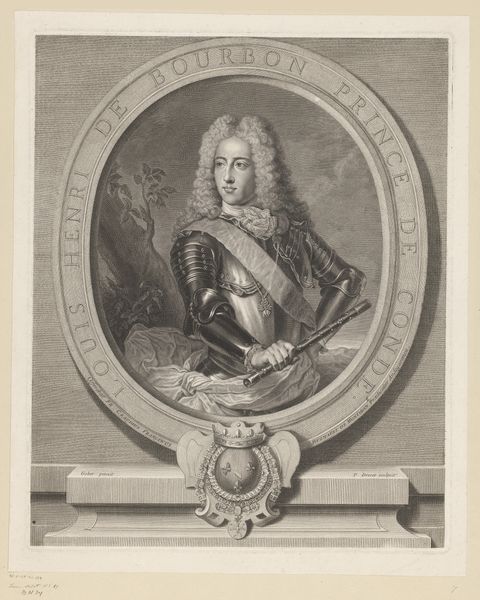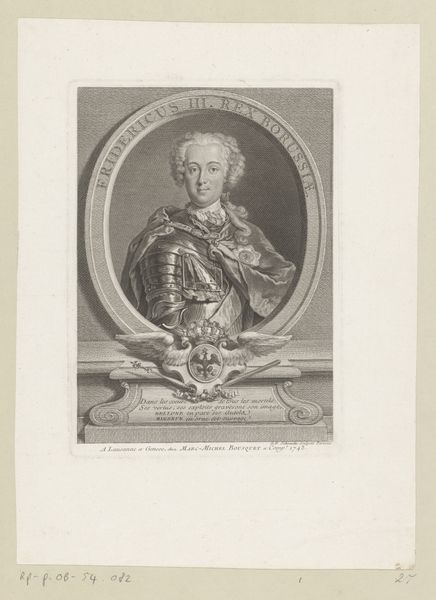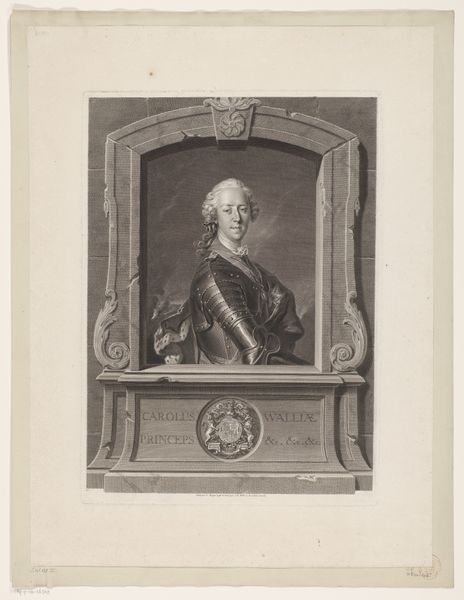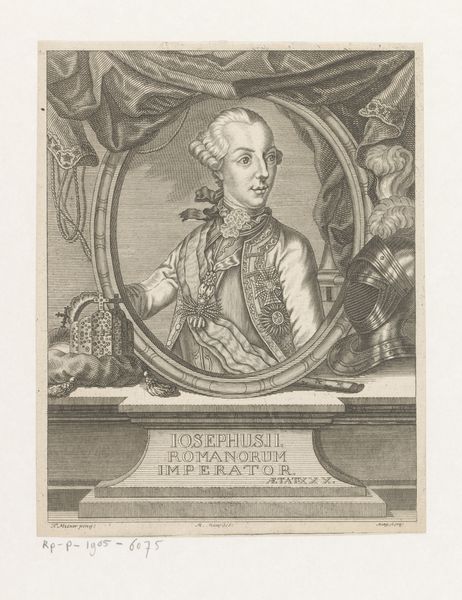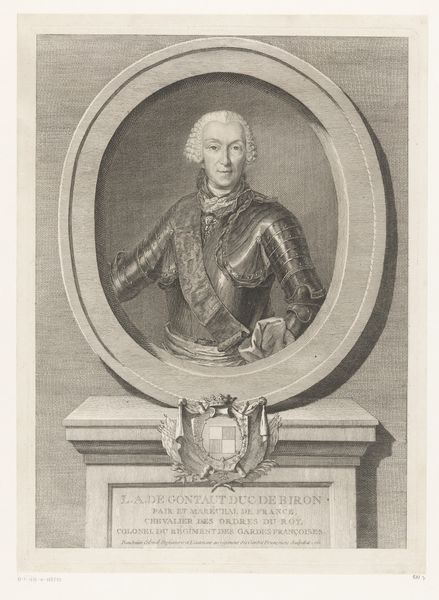
Dimensions: height 410 mm, width 300 mm
Copyright: Rijks Museum: Open Domain
Curator: We're looking at a print from 1764 titled "Portret van Ferdinand I, koning der beide Siciliën," created by Filippo Morghen. It's an engraving depicting Ferdinand I, King of the Two Sicilies. Editor: My initial reaction is…power. But an odd kind. There’s a distinct sense of almost childish authority on display here, reinforced by the composition. The circular frame feels confining. Curator: It’s fascinating how the Baroque style melds into Neoclassicism here. Notice the precise lines, the meticulous detail in the royal garb, contrasted with the subject's youthful appearance and the slightly sentimental quality typical of Baroque portraiture. Semiotically, the oval border suggests the idea of containing absolute monarchical power within a carefully defined social order. Editor: Right, and if we look at this portrait within the context of 18th-century power structures, it reveals the constructed nature of monarchy itself. Ferdinand, depicted as a boy, is propped up by symbols - the crown, the ermine, the Latin inscriptions. He wasn't inherently powerful; his authority was conferred upon him, even manufactured. Note the line at the bottom. "Philippus Morghen". His function in maintaining the image of monarchy through reproduction cannot be overlooked. Curator: Absolutely. Morghen’s mastery of line and shading creates an incredible sense of depth, giving Ferdinand a three-dimensionality that contrasts with the flat, decorative elements. It creates an intentional tension between realism and idealization, which makes this so unique for the time. Editor: But also consider the intended audience for a print like this. It circulated amongst the elite, reinforcing their perceptions of dynastic power and legitimacy. But for those excluded from the circle, it might represent something very different, maybe even an absurd caricature. Looking closely you will also notice Latin phrases at the bottom of the image that translate to complex lineage claims of a king who has absentee parents from Spain, referencing a moment of political upheaval that would ripple for generations. Curator: It is indeed a document reflecting the complex political climate of its time, and filtered and made even more nuanced through a masterful execution and use of the media. Editor: It encourages us to question how we visualize and legitimize power itself, yesterday and today.
Comments
No comments
Be the first to comment and join the conversation on the ultimate creative platform.
